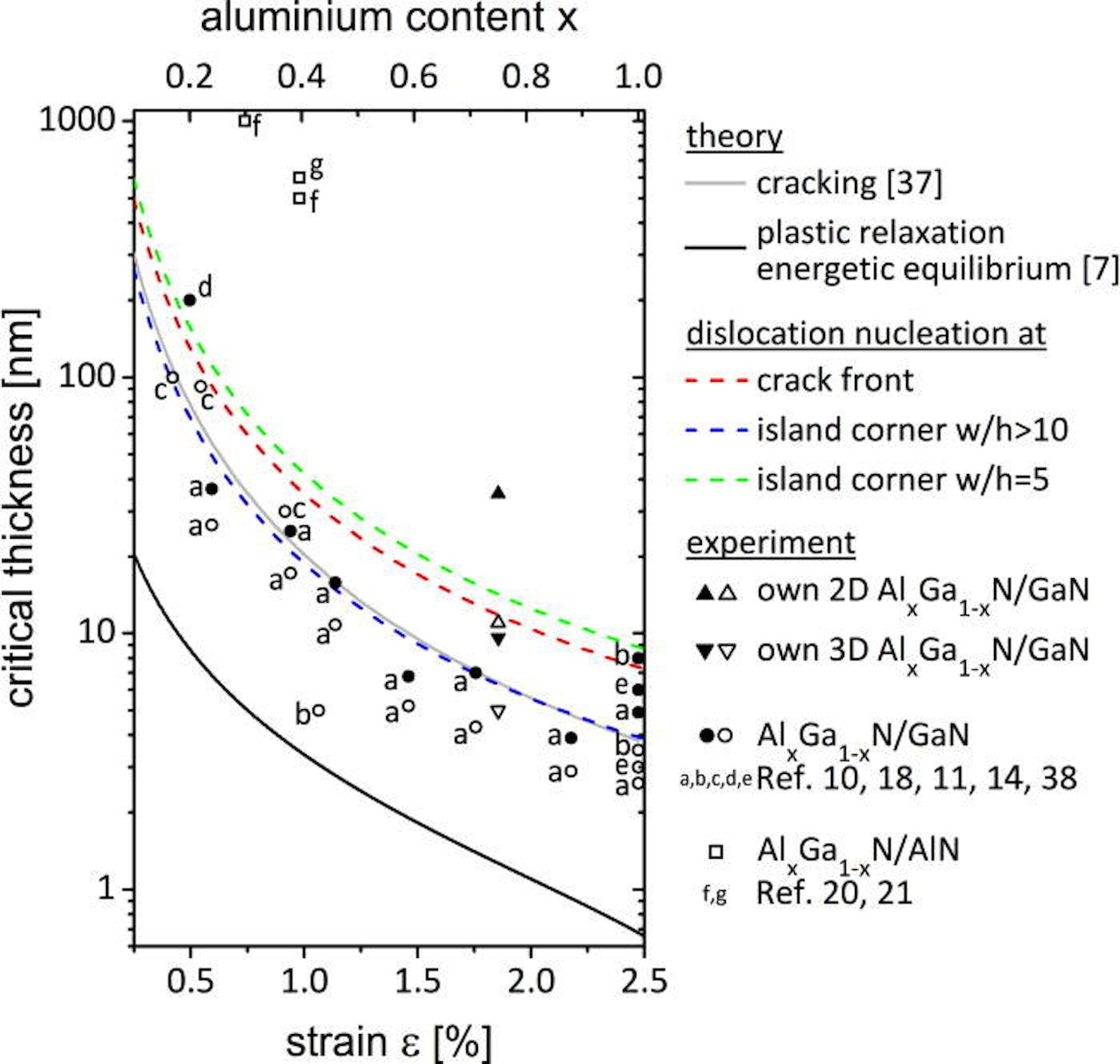German Team sheds light on dislocations in wurtzite layers

A German research team has resolved the fundamental ambiguity behind the formation of misfit dislocations in strained c-plane wurtzite layers.
The new findings, published in the Journal of Applied Physics, will help to optimise, in particular, the growth of AlGaN/GaN heterostructures for deep-UV emitters and achieve either films with low defect density or, on the contrary, to intentionally promote plastic relaxation in such structures for strain-engineering purposes.
The researchers from the Leibniz Institute for Crystal Growth considered the crucial step of misfit dislocation nucleation and investigated the influence of different growth modes on the strain relaxation process. Their work provides for the first time a reliable quantitative model for the plastic relaxation process of strained c-plane wurtzite films and allows to accurately predict the critical thickness as dependent on the actual surface morphology.
Whether to relax the strain between two layers caused by the lattice mismatch or to grow pseudomorphic defect-free heterojunctions, it is critical to understand under which conditions and how misfit dislocations form in the material.
Previous quantitative studies of plastic relaxation in wurtzite films adopted the classical models deduced from cubic materials (InGaAs on GaAs, SiGe on Si). In these works, the authors only considered the energy balance aspect, i.e. the moment when plastic relaxation becomes energetically favourable, while completely neglecting the nucleation process of misfit dislocations itself.
However, for wurtzite materials, it is particularly important to consider this process, due to the limitation of how dislocations can move within the wurtzite crystal lattice. As an outcome, a significant discrepancy between theoretical predictions and experimental observations of plastic relaxation in III-nitride thin films has existed for many years.
The current study combines thorough experimental analysis of dislocation formation in AlGaN/GaN heterostructures at each growth step by transmission electron microscopy (TEM), scanning electron microscopy (SEM) and atomic force microscopy (AFM) technics with theoretical calculations of the stress distribution at the dislocation nucleation sites obtained from the finite element method.
"We have found, that for c-plane wurtzite films only the presence of three-dimensional surface structures "“ islands' edges and corners, crack fronts, surface macro-steps or V-pits "“ and the high concentration of the shear stress at these sites enables the nucleation and spread of misfit dislocations in the interfacial plane. This provides an efficient pathway for the plastic relaxation." "“ says Toni Markurt, the author of the work and a researcher from the Leibniz Institute for Crystal Growth.
More important, according to the authors, the critical thickness of the films strongly depends on the surface morphology and the actual geometry of surface structures: for example, two-dimensional layers with cracks can be grown thicker than films with three-dimensional islands, before undergoing plastic relaxation.
The graph above shows critical thickness for plastic relaxation of c-plane strained wurtzite films. Dashed and solid lines correspond to calculated critical thicknesses according to the new results dependent on the surface morphology and the old model. Symbols represent experimental data.
The work was done in a close collaboration with Osram Opto Semiconductors, who provided dedicated samples for the experimental study.
'A predictive model for plastic relaxation in (0001)-oriented wurtzite thin films and heterostructures' by T. Markurt et al; Journal of Applied Physics 124, 035303 (2018)































